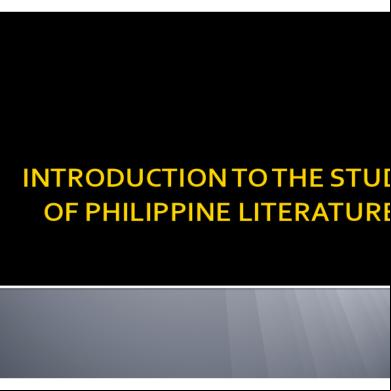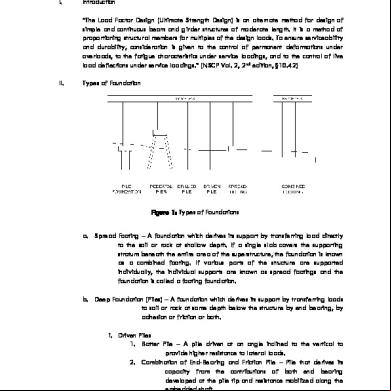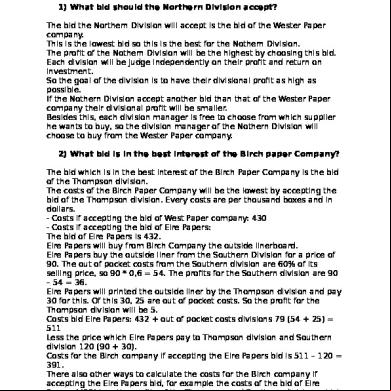Introduction To Philippine Literature 1s55o
This document was ed by and they confirmed that they have the permission to share it. If you are author or own the copyright of this book, please report to us by using this report form. Report 3b7i
Overview 3e4r5l
& View Introduction To Philippine Literature as PDF for free.
More details w3441
- Words: 1,744
- Pages: 52
The word literature is derived from the Latin
term Litera which means letter. It has been defined by various writers. Because literature deals with ideas, thoughts and emotions of man, literature can be said to be the story of man. Man’s loves, griefs, thoughts, dreams, and aspirations coached in a beautiful language is Literature.
In order to know the history of a nation’s spirit, one must read its literature. Brother Azurin defines Literature that it expresses the feelings of people to society, to the government, to his surroundings, to his Fellowmen and to his Divine Creator. Webster defines literature as anything that is printed, as long as it is related to the ideas and feelings of people, whether it is true, or just a product of one’s imagination. Salazar and Nazal says that true literature is a piece of written work which is undying. It expresses the feelings and emotions of people
In response to his everyday efforts to live, to be happy in his environment and, after struggles, to reach his Creator.
Universality Artistry
Intellectual Value Suggestiveness Spiritual Value Permanence Style
Great literature is timeless and timely. Forever relevant, it appeals to one and all,
anytime, anywhere, because it deals with elemental feelings, fundamental truths and universal conditions.
This is the quality that appeals to our
sense of beauty.
A literary works stimulates thought. It
enriches our mental life by making us realize fundamental truths about life and human nature.
This is the quality associated with the
emotional power of literature. Great literature moves us deeply and stirs our feeling and imagination, giving and evoking visions above and beyond the plane of ordinary life and experience.
Literature elevates the spirit by bringing out
moral values which makes a better persons. The capacity to inspire is part of the spiritual value of literature.
A great work of literature endures. It can be read again and again as each
reading gives fresh delight and new insights and opens a new world of meaning and experience. Its appeal is lasting.
This is the peculiar way in which writers
sees life, forms his ideas and expresses them.
We study Philippine Literature so that we can better appreciate our literary heritage. Through the study of Philippine Literature, we can trace our rich heritage of ideas and handed down to us from our forefathers. Understand that we have a noble traditions which can serve as the means to assimilate other cultures. Realize literary limitations conditioned by certain historical factors and we can take steps to overcome them. Manifest our deep concern for our own literature.
Literature and history are closely interrelated. In
discovering history of a race, a country, we basically understand their own culture and traditions, hence the written customs and traditions of a country, the dreams and aspirations of its people is called Literature. History can also be written down and this too, is literature. History therefore is an integral part of literature.
Literature and history however also have
their differences. Literature may not necessarily be based on true events but history is.
The Bible or the Sacred Writings – This has
become the basis of Christianity originating from Palestine and Greece. Koran-‐ The Muslim Bible originating from Arabia. The Iliad and Odyssey – These have been the source of myths and legends of Greece. They were written by Homer.
The Mahabharata-‐ The longest epic of the world. It
contains the history of religion of India. Canterbury Tales-‐ It depicts the religion and customs of the English in the early days. This originated from England and written by Chaucer. Uncle Tom’s Cabin-‐ by Harriet Beecher Stowe of the US. This depicted the sad fate of slaves; this became the basis of democracy later on. The Divine Comedy – by Dante Alighieri This shows the religion and customs of the Early Italians.
El Cid Compeador – This shows the cultural
characteristics of the Spaniards and their national history. The Song of Roland – This includes Doce Pares and Ronscesvalles of . It tells about the Golden age of Christianity in . The Book of the Dead – This includes the cult of Osiris and the mythology and theology of Egypt. One Thousand and One Nights or the Arabian Nights – From Arabia and Persia (Iran) It shows the ways of government, of industries and of the society of the Arabs and the Persians.
Literature
Prose
Poetry
PROSE
POETRY
FORM
Written in paragraph form
Written in stanza or verse form
LANGUAGE
Expressed in ordinary form
Expressed in metrical, rhythmical and figurative language
APPEAL
To the intellect
To the emotion
AIM
To convince, Stir the imagination instruct, imitate and and set an idea of reflect how life should be
This is a long narrative divided into chapters The events are taken from true-‐to-‐life stories
and spans a long period of time. There are many characters involved. Examples: Without Seeing the Dawn by Stevan Javellana Dekada 70 by Lualhati Bautista
This is a narrative involving one or more
characters , one plot and one single impression. Examples: The Laughter of My Father by Carlos Bulosan Dead Stars by Paz Marquez-‐Benitez How My Brother Leon Brought Home a Wife by Manuel E. Arguilla
This is presented on stage, is divided into acts
and each act has many scenes. Examples: Three Rats by Wilfredo Ma. Guerrero Cadaver by Alberto S. Florentino Sa Pula, Sa Puti by Rodrigo Francisco
These are fictitious narratives, usually about
origins. Examples: Legend of the Mermaid Legend of Tagaytay
These are fictitious narratives which deal with
animals and inanimate things who speak and act like people. Have morals or lessons Examples: The Monkey and the Turtle The Two Cats and the Monkey
This is a short entertaining about an
amusing or interesting event or person. Its main aim is to bring out lessons to the reader. Example: The Moth and the Lamp
A
short literary composition which is expository in nature. The author shares some of his thoughts, feelings, experiences or observations on some aspects of life that has interested him.
This is an of a certain person’s life
written by another.
AUTOBIOGRAPHY – a written of
man’s life written by himself
This is a report of everyday events in society,
government, science and industry (local, national, international).
This is a formal treatment of a subject and is
intended to be spoken in public. It appeals to the intellect, to the will or to the emotions of the audience.
A form of poetry which describes important events in life, either real or imaginary. A poem that tells a story.
This is an extended narrative poem
about heroic exploits often under supernatural control. It may deal with heroes and gods. Two Kinds: 1. ANCIENT/POPULAR EPIC – often without a definite author and is of slow growth 2. LITERARY/MODERN EPIC – with a definite author
A
narrative poem consisting usually of a single series of connective events that are simple, and generally do not form a plot. Examples of these are simple idylls or home tales, love tales, tales of the supernatural or tales written for a strong moral purpose in verse form.
A
narrative poem that tells a story of adventure, love and chivalry. The typical hero is knight on a quest.
Considered the shortest and simplest type of
narrative poetry. It has a simple structure and tells of a single incident. It is intended to be sung. Variations: love ballads, humorous, moral, historical or mythical ballads.
Originally refers to that kind of poetry m e a n t t o b e s u n g t o t h e accompaniment of a lyre. Now, it applies to any type of poetry that expresses emotions and feelings of the poet. It is usually short, simple and easy to understand.
A
lyric poem of some length (no definite number of syllables or of lines in a stanza), serious in subject and dignified in style. It is most majestic of the lyric poems. It is written in a spirit of praise of some persons or things.
A lyric poem which expresses feelings of grief
and melancholy, and whose theme is death.
A lyric poem of 14 lines dealing with an
emotion, a feeling, or an idea.
These are short poems intended to be sung. The common theme is love, despair, grief,
doubt, joy, hope and sorrow.
H a v e
m e a s u r e s o f t w e l v e s y l l a b l e s (dodecasyllabic) and slowly sung to the accompaniment o a guitar or banduria. Example: Florante at Laura
H a v e
m e a s u r e s o f e i g h t s y l l a b l e s (octosyllabic) and recited to a martial beat. Example: Ibong Adarna
A song praising God or the Virgin Mary and
containing a philosophy of life.
Comes from the Greek term Komos meaning
festivity or revelry. This form is usually light and written with the purpose of amusing, and usually has a happy ending.
This is usually used in musical plays with the
opera. Today, this is related to tragedy just as the farce is to comedy. It arouses immediate and intense emotion and is usually sad, but there is a happy ending for the principal character.
This
involves the hero struggling mightily against dynamic forces; he meets death or ruin without success and satisfaction.
This is an exaggerated comedy. It seeks to arouse mirth by laughable lines;
situations are too ridiculous to be true; the characters seem to be caricatures and the motives undignified and absurd.
This form is either purely comic or tragic and
it pictures the life of today. It may aim to bring about changes in the social conditions.
term Litera which means letter. It has been defined by various writers. Because literature deals with ideas, thoughts and emotions of man, literature can be said to be the story of man. Man’s loves, griefs, thoughts, dreams, and aspirations coached in a beautiful language is Literature.
In order to know the history of a nation’s spirit, one must read its literature. Brother Azurin defines Literature that it expresses the feelings of people to society, to the government, to his surroundings, to his Fellowmen and to his Divine Creator. Webster defines literature as anything that is printed, as long as it is related to the ideas and feelings of people, whether it is true, or just a product of one’s imagination. Salazar and Nazal says that true literature is a piece of written work which is undying. It expresses the feelings and emotions of people
In response to his everyday efforts to live, to be happy in his environment and, after struggles, to reach his Creator.
Universality Artistry
Intellectual Value Suggestiveness Spiritual Value Permanence Style
Great literature is timeless and timely. Forever relevant, it appeals to one and all,
anytime, anywhere, because it deals with elemental feelings, fundamental truths and universal conditions.
This is the quality that appeals to our
sense of beauty.
A literary works stimulates thought. It
enriches our mental life by making us realize fundamental truths about life and human nature.
This is the quality associated with the
emotional power of literature. Great literature moves us deeply and stirs our feeling and imagination, giving and evoking visions above and beyond the plane of ordinary life and experience.
Literature elevates the spirit by bringing out
moral values which makes a better persons. The capacity to inspire is part of the spiritual value of literature.
A great work of literature endures. It can be read again and again as each
reading gives fresh delight and new insights and opens a new world of meaning and experience. Its appeal is lasting.
This is the peculiar way in which writers
sees life, forms his ideas and expresses them.
We study Philippine Literature so that we can better appreciate our literary heritage. Through the study of Philippine Literature, we can trace our rich heritage of ideas and handed down to us from our forefathers. Understand that we have a noble traditions which can serve as the means to assimilate other cultures. Realize literary limitations conditioned by certain historical factors and we can take steps to overcome them. Manifest our deep concern for our own literature.
Literature and history are closely interrelated. In
discovering history of a race, a country, we basically understand their own culture and traditions, hence the written customs and traditions of a country, the dreams and aspirations of its people is called Literature. History can also be written down and this too, is literature. History therefore is an integral part of literature.
Literature and history however also have
their differences. Literature may not necessarily be based on true events but history is.
The Bible or the Sacred Writings – This has
become the basis of Christianity originating from Palestine and Greece. Koran-‐ The Muslim Bible originating from Arabia. The Iliad and Odyssey – These have been the source of myths and legends of Greece. They were written by Homer.
The Mahabharata-‐ The longest epic of the world. It
contains the history of religion of India. Canterbury Tales-‐ It depicts the religion and customs of the English in the early days. This originated from England and written by Chaucer. Uncle Tom’s Cabin-‐ by Harriet Beecher Stowe of the US. This depicted the sad fate of slaves; this became the basis of democracy later on. The Divine Comedy – by Dante Alighieri This shows the religion and customs of the Early Italians.
El Cid Compeador – This shows the cultural
characteristics of the Spaniards and their national history. The Song of Roland – This includes Doce Pares and Ronscesvalles of . It tells about the Golden age of Christianity in . The Book of the Dead – This includes the cult of Osiris and the mythology and theology of Egypt. One Thousand and One Nights or the Arabian Nights – From Arabia and Persia (Iran) It shows the ways of government, of industries and of the society of the Arabs and the Persians.
Literature
Prose
Poetry
PROSE
POETRY
FORM
Written in paragraph form
Written in stanza or verse form
LANGUAGE
Expressed in ordinary form
Expressed in metrical, rhythmical and figurative language
APPEAL
To the intellect
To the emotion
AIM
To convince, Stir the imagination instruct, imitate and and set an idea of reflect how life should be
This is a long narrative divided into chapters The events are taken from true-‐to-‐life stories
and spans a long period of time. There are many characters involved. Examples: Without Seeing the Dawn by Stevan Javellana Dekada 70 by Lualhati Bautista
This is a narrative involving one or more
characters , one plot and one single impression. Examples: The Laughter of My Father by Carlos Bulosan Dead Stars by Paz Marquez-‐Benitez How My Brother Leon Brought Home a Wife by Manuel E. Arguilla
This is presented on stage, is divided into acts
and each act has many scenes. Examples: Three Rats by Wilfredo Ma. Guerrero Cadaver by Alberto S. Florentino Sa Pula, Sa Puti by Rodrigo Francisco
These are fictitious narratives, usually about
origins. Examples: Legend of the Mermaid Legend of Tagaytay
These are fictitious narratives which deal with
animals and inanimate things who speak and act like people. Have morals or lessons Examples: The Monkey and the Turtle The Two Cats and the Monkey
This is a short entertaining about an
amusing or interesting event or person. Its main aim is to bring out lessons to the reader. Example: The Moth and the Lamp
A
short literary composition which is expository in nature. The author shares some of his thoughts, feelings, experiences or observations on some aspects of life that has interested him.
This is an of a certain person’s life
written by another.
AUTOBIOGRAPHY – a written of
man’s life written by himself
This is a report of everyday events in society,
government, science and industry (local, national, international).
This is a formal treatment of a subject and is
intended to be spoken in public. It appeals to the intellect, to the will or to the emotions of the audience.
A form of poetry which describes important events in life, either real or imaginary. A poem that tells a story.
This is an extended narrative poem
about heroic exploits often under supernatural control. It may deal with heroes and gods. Two Kinds: 1. ANCIENT/POPULAR EPIC – often without a definite author and is of slow growth 2. LITERARY/MODERN EPIC – with a definite author
A
narrative poem consisting usually of a single series of connective events that are simple, and generally do not form a plot. Examples of these are simple idylls or home tales, love tales, tales of the supernatural or tales written for a strong moral purpose in verse form.
A
narrative poem that tells a story of adventure, love and chivalry. The typical hero is knight on a quest.
Considered the shortest and simplest type of
narrative poetry. It has a simple structure and tells of a single incident. It is intended to be sung. Variations: love ballads, humorous, moral, historical or mythical ballads.
Originally refers to that kind of poetry m e a n t t o b e s u n g t o t h e accompaniment of a lyre. Now, it applies to any type of poetry that expresses emotions and feelings of the poet. It is usually short, simple and easy to understand.
A
lyric poem of some length (no definite number of syllables or of lines in a stanza), serious in subject and dignified in style. It is most majestic of the lyric poems. It is written in a spirit of praise of some persons or things.
A lyric poem which expresses feelings of grief
and melancholy, and whose theme is death.
A lyric poem of 14 lines dealing with an
emotion, a feeling, or an idea.
These are short poems intended to be sung. The common theme is love, despair, grief,
doubt, joy, hope and sorrow.
H a v e
m e a s u r e s o f t w e l v e s y l l a b l e s (dodecasyllabic) and slowly sung to the accompaniment o a guitar or banduria. Example: Florante at Laura
H a v e
m e a s u r e s o f e i g h t s y l l a b l e s (octosyllabic) and recited to a martial beat. Example: Ibong Adarna
A song praising God or the Virgin Mary and
containing a philosophy of life.
Comes from the Greek term Komos meaning
festivity or revelry. This form is usually light and written with the purpose of amusing, and usually has a happy ending.
This is usually used in musical plays with the
opera. Today, this is related to tragedy just as the farce is to comedy. It arouses immediate and intense emotion and is usually sad, but there is a happy ending for the principal character.
This
involves the hero struggling mightily against dynamic forces; he meets death or ruin without success and satisfaction.
This is an exaggerated comedy. It seeks to arouse mirth by laughable lines;
situations are too ridiculous to be true; the characters seem to be caricatures and the motives undignified and absurd.
This form is either purely comic or tragic and
it pictures the life of today. It may aim to bring about changes in the social conditions.










